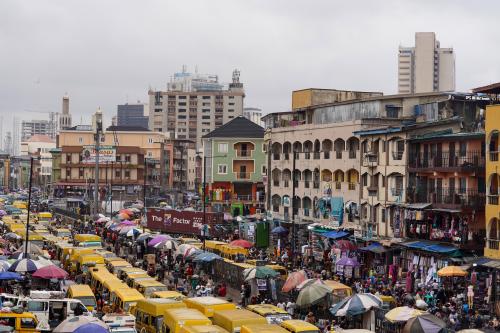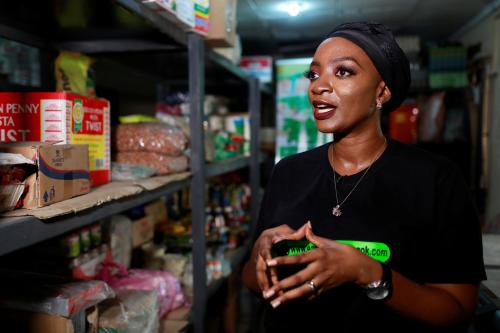Editor’s Note: This article was originally published in the May 2012 edition of
Longitude
, a monthly Italian publication on world affairs.
The newly-elected President of the World Bank – Dr. Jim Yong Kim – will have to establish himself as a thoughtful leader as he takes office in July, by pushing through a broad range of reforms that are not just desirable but vital for the institution’s long-term effectiveness. They range from enhancing the bank’s legitimacy through governance reforms to the adaptation of its responsibilities to a new reality.
The World Bank’s role in the development landscape has changed drastically. From that of benevolent monopolist in the early decades of its existence, it has now become a – still important, but no longer dominant – actor alongside entities like church groups, nongovernmental institutions and private philanthropists, all with the ability to leverage substantial resources.
Even among official donors, the World Bank has to confront the emergence of new actors, such as China; the so-called vertical funds, like the Global Fund; and even new actors, such as the Bank of South. The idea for establishing such a new bank just received a political endorsement at the latest BRICS Summit in March in New Delhi.
As a result of this proliferation, aid coordination has become inherently difficult, escalating transaction costs and increasing the likelihood of duplicating efforts. In the earlier days of development, the main donors could be counted on two hands. This is no longer possible as they exceed the sum of donor and recipient countries alike.
While total aid has been steadily increasing, it is not surprising that the average project size has been declining. The proliferation of aid actors puts greater strain on the capacity of recipient countries and skews their focus towards donor-driven relationships rather than towards the implementation of their nationally drawn strategies, decreasing aid effectiveness.
The fact that, while total bilateral aid has been rising steadily, the size of International Development Association – the World Bank’s concessional arm– has remained constant in real terms reflects, among other factors, a weak sense of ownership from emerging official donors.
As noted by Homi Kharas of the Brookings Institution, this points to the need for a significant overhaul of the bank’s governance arrangements. Unfortunately, those arrangements also include strengthening an open and merit-based selection process, as opposed to a system of nationality privileges, which Dr. Kim’s election has, however, only reconfirmed.
For the whole of the existence of the World Bank, the United States has held the presidency of the institution, while Western Europe has benefited from the same privilege at the International Monetary Fund, the Bretton Woods sister organization. It is clear that this informal agreement is no longer tenable and is utterly inconsistent with the spirit – and even the letter – of several G-20 press releases.
Looking forward, there are two more compelling challenges that the new president will have to address. The first is to better define the World Bank’s role vis-à-vis global public goods. So far, it has financed a number of global programs, but more on an ad hoc basis than as part of a comprehensive strategy. In fact, the World Bank has mainly focused on a country-based agenda, not least of all because it is itself a nation-based institution.
As a global multilateral financial institution, however, it seems best positioned to take the lead on the global public goods agenda, as it can best reconcile global convening power, analytical strength and financial firepower.
In fact, as a multilateral institution with a global membership, it is best positioned to overcome inevitable coordination problems that arise when formulating an actionable agenda in this domain.
The breadth and depth of the staff’s analytical skills give the World Bank the potential to connect the dots and shape a cross-cutting agenda ranging from climate change to marine conservation and pandemic diseases.
Differently from UN agencies, moreover, the World Bank also enjoys significant financial capabilities as it can borrow from financial markets to fund its wide range of activities.
Yet, to be effective in this context, it has to command the trust of its global membership, which will inevitably require, once again, reforming its governance framework.
The second challenge for Dr. Kim concerns the efficiency and effectiveness of the World Bank’s current operations. Too often, borrowers complain about the “cost of doing business” with the bank, citing long processing times for their loan applications.
Indeed, this is something that has created leverage for new donors to come in and establish themselves quite assertively. Chinese aid workers are considered in many recipient countries to be quite effective and, above all, fast.
Most importantly, the environmental and social standards the World Bank applies in appraising the financing of its operations, a few argue, have gone too far, to the point of hampering its effectiveness as a development institution.
Some borrowing countries complain that if one had to apply those same standards in Europe or the US, then many important projects would not be implemented.
At any rate, one can say that, if not the standards themselves, at least the way in which they are applied may bias the World Bank’s selection towards those projects that are perceived to be less risky by its staff and that reduce the likelihood of getting its staff into trouble.
To the extent that the current system skews staff incentives towards lower-risk operations, the borrower carries the ultimate risk of not being able to implement a certain project that the institution would have otherwise supported. Most likely, these unfunded projects would come with a higher risk profile, but from them a correspondingly higher return would materialize.
Shifts in the staff’s risk-bearing attitude have already been probed by the World Bank’s internal watchdog, which reported a “widespread perception among task team leaders that categorization of projects is driven by risk aversion rather than an empirical assessment of environmental and social risks.” This points to opportunity costs for the bank and, most importantly, for development.
Yet, given the unique nature of its mission, the World Bank should encourage innovation and experimentation, and it should remember that encouraging innovation goes hand in hand with the risk of failure.
The World Bank’s mandate is, in fact, inherently risky – so risky that markets are simply unable to operate where the bank is concerned. The answer to that is not to curtail the scope of activities and fundable projects, but to step up oversight and improve the bank’s accountability at all layers of its organizational pyramid.
Indeed, given that the World Bank, by design, typically operates in a non-market environment, it does need a high degree of “buy in” from its broader stakeholder community, which has to trust that the institution operates effectively and fairly in achieving its ultimate objectives. Once again, assessing and overhauling governance and oversight arrangements at all levels will be key.
Only to the extent that the new president is perceived to be willing to tackle these long-standing issues, will he be able to leave a personal mark on the institution.



Commentary
Banking on Jim
April 26, 2012